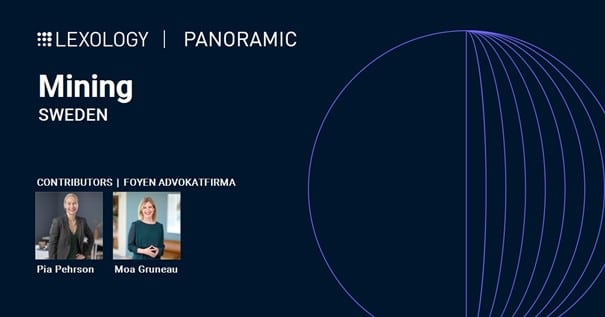Important definitions
The producer is the key actor under the regulation. As defined in the regulation, a producer is anyone who professionally imports packaging or a packaged product into Sweden, manufactures packaging in Sweden, or sells packaging or a packaged product from a country other than Sweden to an end user in Sweden. The definition of a producer also includes anyone who fills or otherwise uses packaging, other than service packaging, in order to protect, present, or facilitate the handling of a product.
Service packaging is either packaging that is filled at the point of sale, such as pizza boxes, or packaging for unprocessed agricultural or horticultural products, such as net bags for firewood or egg cartons. Instead of the pizza, wood, or egg producer being responsible, the business that imports or manufactures the service packaging has producer responsibility for the packaging.
The specific types of packaging subject to producer responsibility under the regulation are consumer packaging, group packaging, transport packaging, and service packaging which is manufactured to present, deliver, contain, protect, or otherwise handle a product. This responsibility comprises everything from raw materials to the final product and spans the entire chain, from producer to user. In addition, both filled single-use products and empty disposable cups are defined as packaging.
A producer’s obligation to provide information and its responsibility to manage packaging waste
A producer who intends to make packaging available on the Swedish market is obligated to notify the Swedish Environmental Protection Agency before making such packaging available. Furthermore, before packaging is made available on the Swedish market, the producer must engage or provide a producer responsibility organisation approved by the Environmental Protection Agency that undertakes to take care of the producer’s packaging when it becomes waste. There is also an obligation if the packaging is submitted to a reusable packaging system, which is a system that ensures that reusable packaging makes multiple rotations, or a market-driven recycling system, which is a system which, based on market forces, ensures that packaging waste from businesses is recycled. Under certain conditions, the Environmental Protection Agency may grant an exemption from this for a certain period of time. This may become relevant if at least 90 per cent of the producer’s packaging rotates in a market-driven system for reuse and is taken care of by the system when it becomes waste, or if the producer’s packaging must be sorted as hazardous waste when it becomes waste.
Requirements for a producer responsibility organisation
The purpose of a producer responsibility organisation for packaging is to prevent and manage packaging waste. Part of the objective will be achieved by requiring the producer responsibility organisation with the largest market share to provide free collection points for businesses’ packaging waste beginning on 1 January 2024. The Environmental Protection Agency will decide which producer responsibility organisation will be subject to the obligation. Plastic, metal, coloured and clear glass, wood, paper, cardboard, and other packaging materials will be collected separately at the collection points. Information on collection and packaging waste must be made available annually by the responsible product responsibility organisation.
Reporting obligation to the Environmental Protection Agency
Under the regulation, there is a reporting obligation whereby the producer is obligated to report certain information to the Environmental Protection Agency by 31 March each year. Producers who fill or otherwise use packaging which is not service packaging, manufacture or import service packaging or single-use cups into Sweden, import packaged goods to Sweden, or sell packaging or a packaged product from a country other than Sweden to an end user in Sweden, are subject to the obligation.
The report must indicate the quantity and type of packaging that the producer has made available on the Swedish market during the preceding calendar year. Producer responsibility organisations for packaging and return systems, as well as return systems that collect waste from businesses in a market-driven system for reuse or a market-driven system for recycling, are also required to submit reports on their activities to the Environmental Protection Agency. The Environmental Protection Agency, in turn, reports to the European Commission in accordance with the Packaging Directive, 94/62/EC.
Producer’s agent
If a producer is not established in Sweden, it may appoint a producer’s agent by issuing a written power of attorney. The producer’s agent must then perform the producer’s obligations as regards the product for which the producer’s agent is responsible. The Environmental Protection Agency must be informed of any such producer’s agent. However, if the producer is established in Sweden and sells packaging in another EEA country where the producer is not established, the producer must appoint a producer’s agent in that country. The producer’s agent must then perform the producer’s responsibilities according to the domestic provisions of the relevant country that implement Directive 2019/904/EU and Directive 94/62/EC.
Reporting duty
A party that intends to operate a market-driven system for reuse and a party that operates a market-driven system for recycling may do so under certain conditions, provided the Environmental Protection Agency has been informed of the activities and it has granted its approval.
Municipal responsibility
Provisions that the municipality is responsible for transporting and treating waste are contained in Chapter 15 of the Environmental Code. The regulation clarifies this responsibility and extends it to include packaging waste from households, businesses whose waste management is co-located with households, and packaging waste generated in squares, parks, and other popular sites.
The added responsibility means that, beginning on 1 January 2024 and through the end of December 2026, the municipality must collect packaging waste from households through close-to-home collection or easily accessible collection points. During the same period, the municipality may collect packaging waste from businesses whose waste management is co-located with that of households if the business has opted for municipal collection. Beginning on 1 January 2027, the responsibility will be extended by requiring the municipality to provide close-to-home collection for both the households and businesses whose waste management is co-located with that of households, if the business has opted for municipal collection. Responsibility for collecting packaging waste generated in squares, parks, and other popular sites will be introduced commencing on 1 January 2026.
While the municipality’s responsibility is clarified and extended in some respects, the extensive producer responsibility provided for in the regulation limits the municipality’s responsibility in other respects.
Fees and security
Producer responsibility organisations must pay a producer fee to the municipality and an annual fee to the Environmental Protection Agency to cover their activities under the regulation. However, the Swedish Environmental Protection Agency’s review under Chapter 5 of the regulation and the supervision referred to in Chapter 12, Section 1 are exempted. A producer responsibility organisation, in turn, charges a packaging fee to the producer. The producer responsibility organisation must also provide security equivalent to the costs for one month’s collection and four months’ treatment of collected packaging waste.
There are additional provisions regarding fees in the regulation (1998:940) on fees for examination and supervision according to the Environmental Code.
Sanctions
The regulation (2012:259) on Environmental Sanctions contains provisions regarding environmental sanctions. For example, an environmental sanction of SEK 30,000 is payable if the producer does not engage or provide a producer responsibility organisation.
Closing comments and analysis
As part of the green transition, the Producer Responsibility for Packaging Regulation brings many welcome changes. These will hopefully contribute to a reduction in carbon emissions as a result of a more resource-efficient waste management and a reduced need for new raw materials.
However, the changes will entail significant costs for the producer, among other things to cover collection and treatment as well as municipal collection of packaging waste. Moreover, producers will be charged with extended responsibility for their packaging waste, as they will need to engage or provide a producer responsibility organisation. Another requirement that the producer must meet in order to avoid sanctions is submitting the prescribed information to the Environmental Protection Agency.
As a result, the regulation imposes significant responsibilities on packaging producers. There is also very little time for producers to make changes before the regulation enters into force on 1 January 2023 and many producers are likely to find it difficult to satisfy the new requirements. The producers will also need to invest a good deal of time and money to adapt their operations in time.
If you have any questions about the new Producer Responsibility for Packaging Regulation, please contact us at Foyen.


